Workshop Types

Ideation & Prioritization
Understanding the problem you are trying to solve and for whom you are solving it is a great start, but where do you go from there? Design thinking teaches us to go broad and include diverse perspectives in finding solutions, but ideation can seem like a daunting task. This workshop will assist teams on alignment around a business opportunity and finding a path forward. The group will brainstorm solutions, prioritize based on business strategies and objectives, and develop a plan for next steps towards implementation.

Sketching & Constraints
Everyone has a role in design and making sure we are solving the right problem, for the right people, at the right time. Articulating your vision can be challenging and communicating it to others can be tricky. In this workshop, we will walk the team through a series of sketching exercises to explore solutions, features, and functionality. We will discuss assumptions to operate under and guardrails to work within, to determine feasibility and next steps.
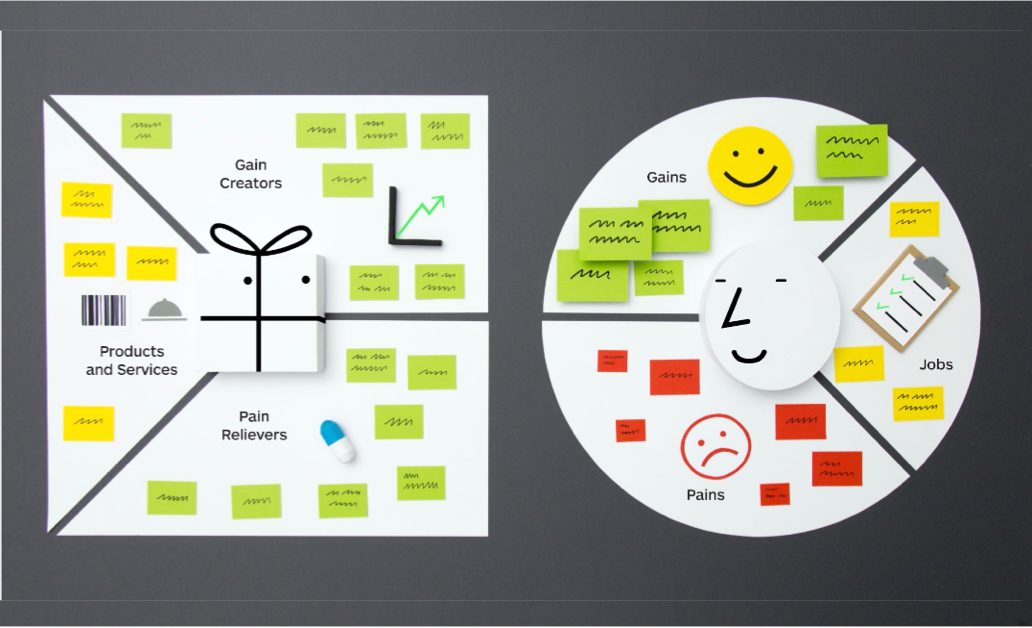
Value Proposition Canvas
“If you build it, they will come” only works in the movies. No matter how valuable or unique we feel our products and services are, they only work if they are meeting the needs of our customers. This immersive engagement starts with an understanding of your customer segments—their jobs to be done, pains, and gains—and then maps out the value you deliver through your products and services. Whether you are looking for positioning and messaging that resonates with unique customers, or to transform your offerings to address changing customer needs, this engagement offers you the building blocks needed to differentiate your business.
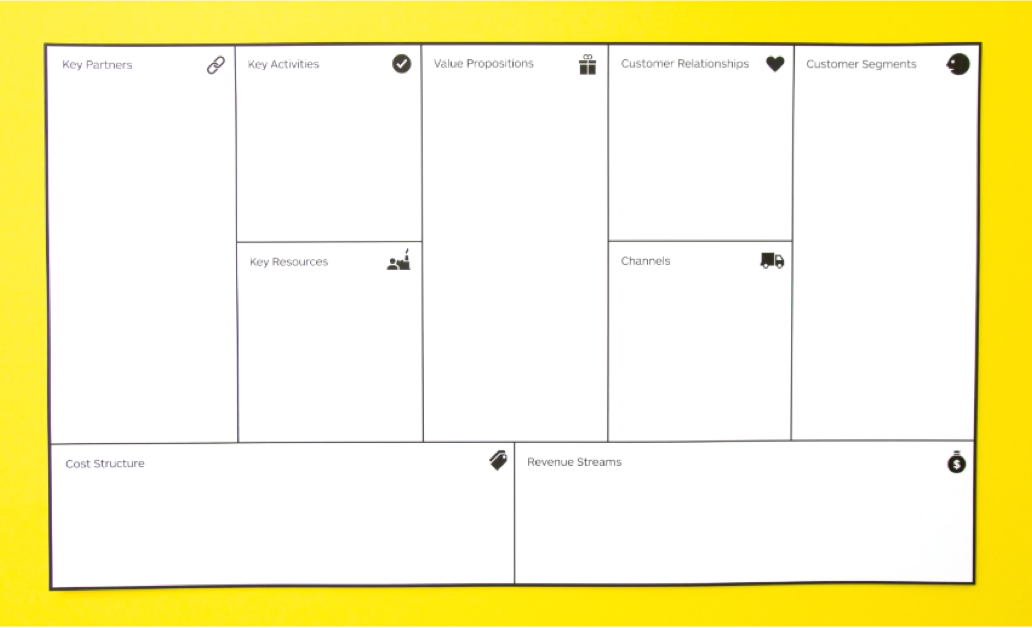
Lean UX Canvas
Aligning a team around a problem and path to solution can be a challenge. Team members can have different thoughts on the what and why of a project. The vision of senior leaders can be disconnected from the team on the ground, tasked with bringing that vision to life. The project itself can be fuzzy and shifting from week to week. The lean UX canvas is a facilitation tool for cross-functional teams, designed to create a customer-centric conversation about the work the team is doing. This workshop will use the canvas to expose the gaps in the team’s understanding of the problem they’re solving, for whom they’re solving it, and why they believe their solutions will work.
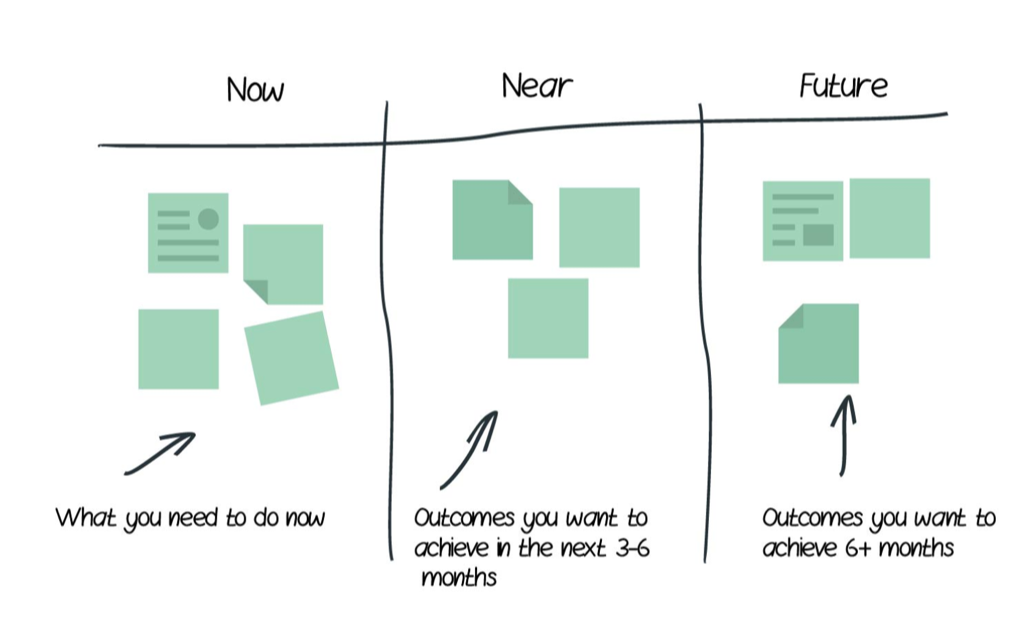
Outcome-based Roadmap
While a list of features mapped along a timeline may seem like a valuable tool for planning and communication, it often does not produce the required results. Feature-based roadmaps are good for showing what will be built and when. However, it does not communicate why things are being built, how the features and enhancements were prioritized, and what the desired result is intended to be. This workshop will start by defining a long-term vision and strategies for your offering. An outcome-based roadmap will work to define the why, set measures for success, and prioritize enhancements while allowing the product teams to find the best solutions for implementation.
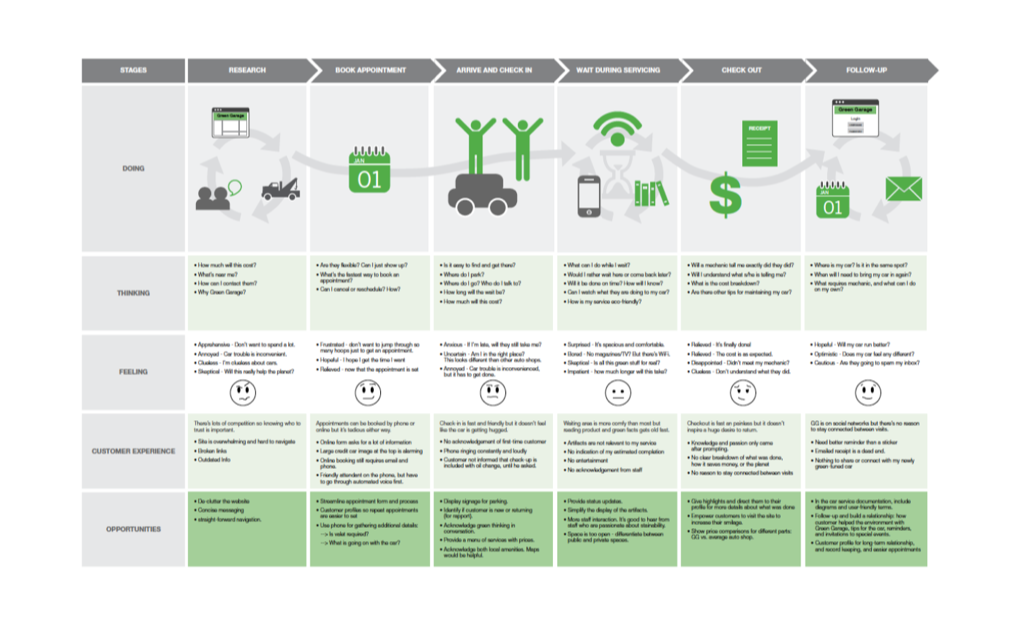
Customer Journey Mapping
In the “age of the customer” (Forrester), companies cannot compete on product offerings alone. The bar for consumer expectations is constantly being raised and they are looking for a more holistic relationship with brands. A customer journey map is a visual representation or a customer’s end-to-end progress in accomplishing a goal that includes multiple tasks and touchpoints. In this workshop, we will begin to map the journey based on internal knowledge, identify pains and opportunities, and develop a plan for validating assumptions.
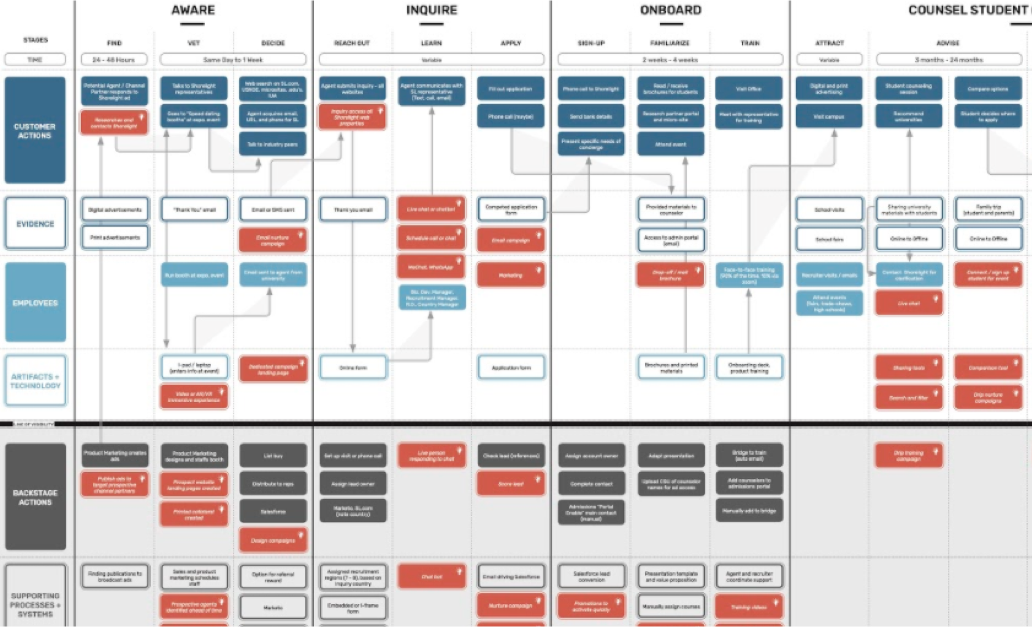
Service Blueprinting
As the focus on customer experience grows in importance, organizations need to shape themselves to meet the challenge. A service blueprint is a diagram showing both the service touchpoints a visitor experiences along with the people, processes, and technologies that support these experiences but which exist below the so-called line of visibility. It’s a critical complement to a Customer Journey Map. In this workshop, we will introduce service blueprinting as an actionable, operational tool for analyzing, implementing, and maintaining a service.